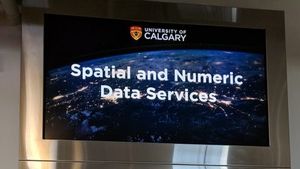Here is something I wrote a couple of years ago under the title Personal reference collections as digital libraries. A little updating of examples and I think it still holds:
We will see much more activity connecting user environments and bibliographic resources. I am thinking of citation managers, reading lists, social bookmarking sites (see citulike and unalog) and RSS feeds. Some of these may be specifically supported by the library (e.g. a citation manager service), some may be developed within an academic or scholarly context (e.g. Zotero, citulike, …), and some may be general network services. People have multiple ways of creating personal and shared collections of data and links.
They are also an example of an increasingly important aspect of our bibliographic apparatus – we have discovery or ‘rendezvous’ experiences outside the library resource, where it would be good to be able to link back into a library service for fulfillment, or indeed into other services. … [Personal reference collections as digital libraries]
I have written several times of such resources as a type of bibliographic tissue. In an ideal case they might be built from metadata conveniently pulled from several resources, catalogs, A&I services and so on, and, again ideally, they might always conveniently connect those descriptions with the appropriate described resource, whether in the library or elsewhere. Of course, we know that this does not always happen. The above quote, for example, is in the context of work at the University of Minnesota looking at how readily data in local Refworks collections could be connected back to library resources. We can expect such flows to improve: look for example at the list of databases the Mendeley Web Importer feature works with.
Now, although libraries offer such services, in many cases students, teachers, or researchers may find their own way to support such activity and they may use services outside the library orbit.
In this context I was interested recently to learn about two initiatives.
First was the Talis Aspire product, a description of which I encountered at the Emtacl10 conference. It is a shared resource list management system. I have no experience of it, but was interested in the description. It allows the list creator to pull metadata from several resources; it claims to integrate with learning management system, ILS, and other relevent campus environments; it is provided in the cloud, and claims to have social features on the way, building on top of the aggregate resource list data. Clearly, resource lists and the works included in them, are interesting social objects around which some community might develop. So, it is providing a management framework which potentially strengthens the connective bibliographic tissue of the reading list.
However, the most interesting aspect of the description to me were the suggestions made around improving the quality of the educational experience for the student, increasing the productivity of the educator, and leveraging systems investment. Reading lists are central to the educational experience and improving their utility or making it easier to manage them are big gains.
Second was MyReferences, produced by the Telstar project at the Open University, which aims to provide a framework for embedding references/citations in learning management systems. Specifically, the OU team worked with RefWorks and Moodle, but are also providing a range of interesting materials about use cases, experiences, technologies, and so on.
Owen Stephens, TELSTAR Project Manager, said: “These new tools are invaluable to the 21st century educational institution and student. There is an ever increasing wealth of resources available and hence a real need for students, course and programme teams to be able to create, manipulate, organise and store a range of citations and bibliographic references for easy use.
There are already a number of general referencing tools available to students, but MyReferences takes the usability of these tools a step further by integrating them into online courses so the materials students commonly need to reference are already available in the format they need. Students simply select the sources they need to reference, the referencing style their institution requires and then copy and paste the result into their assignment. [Press Release: Referencing made easy]
In each case, there is an attempt to add value to the simple supply of bibliographic data by providing the ability to make that data work in student and teacher workflows, and by conveniently connecting workflow to useful resources.



